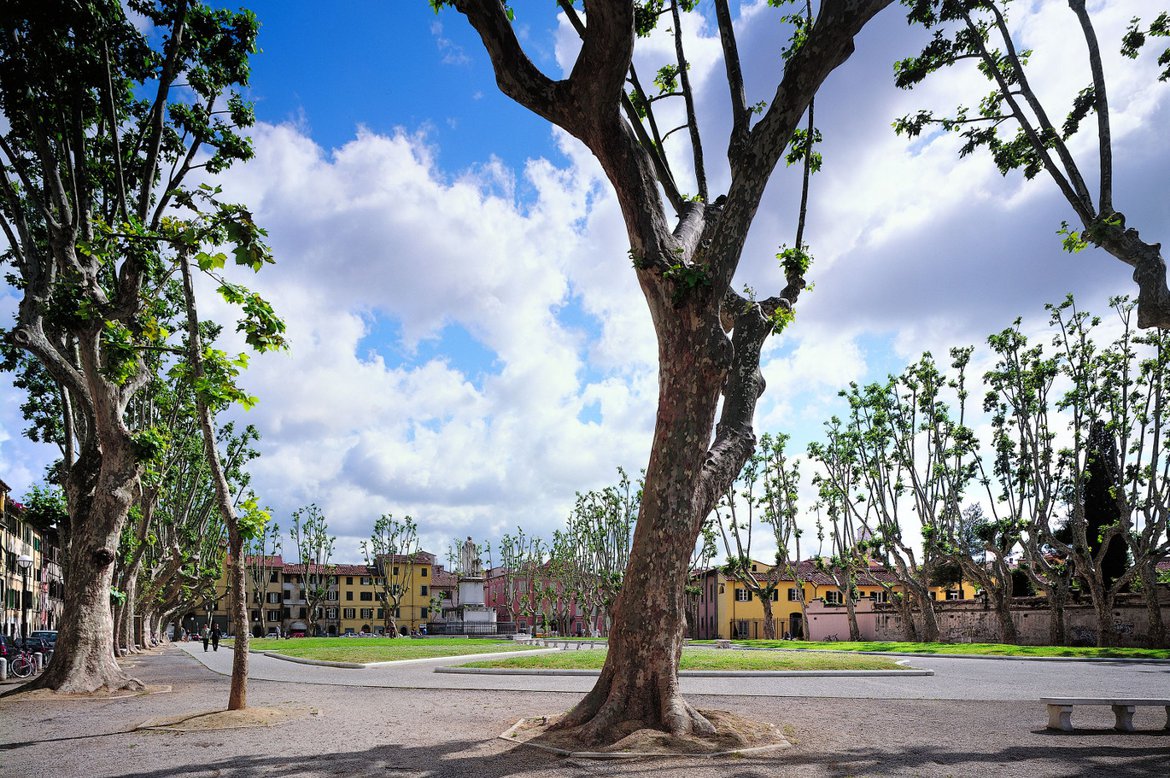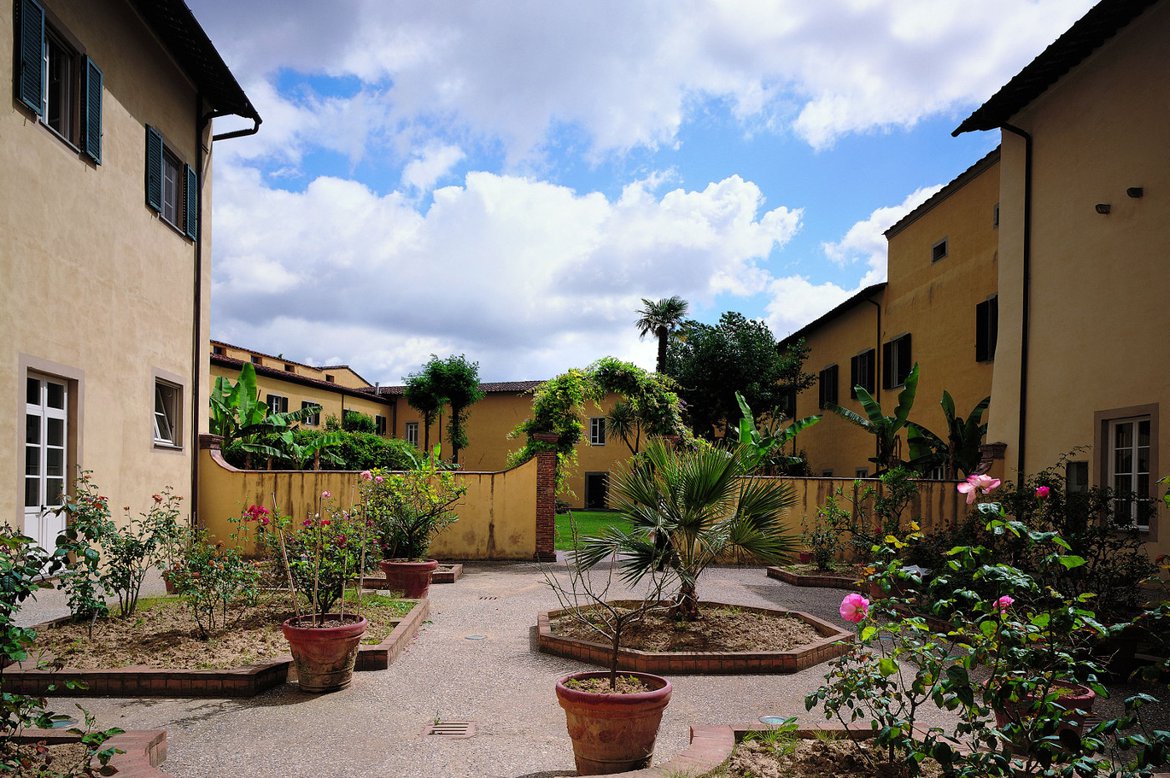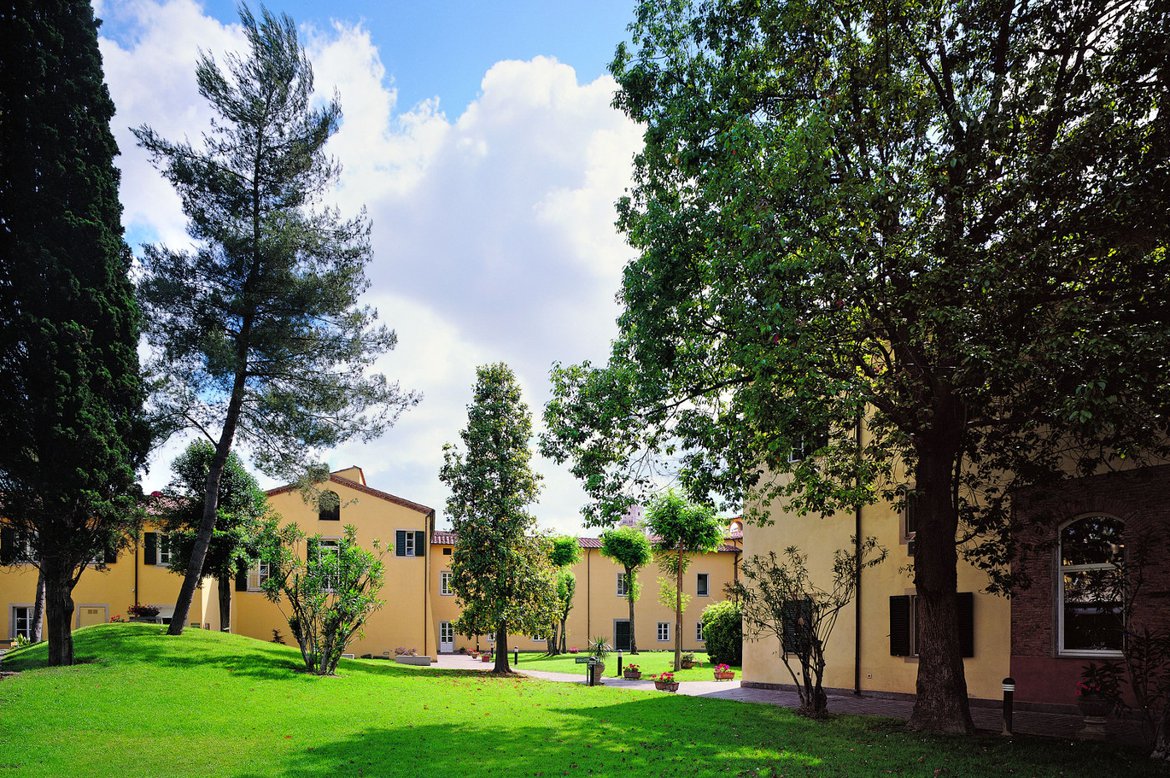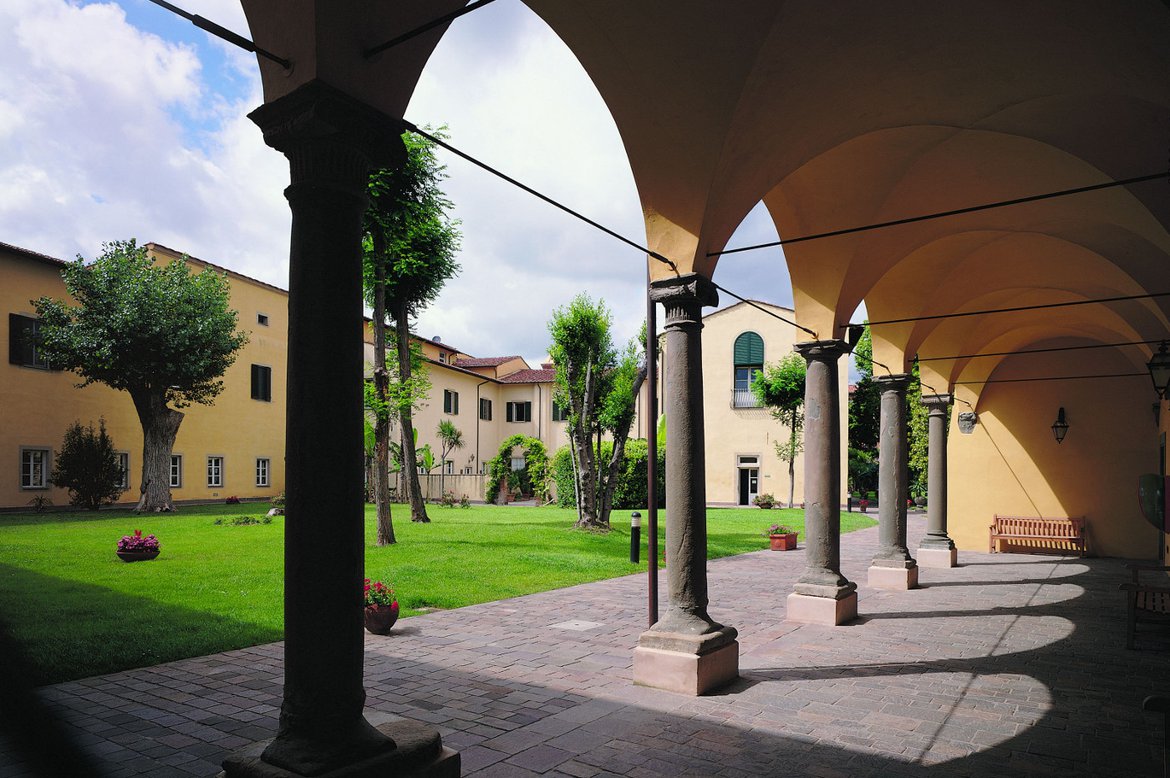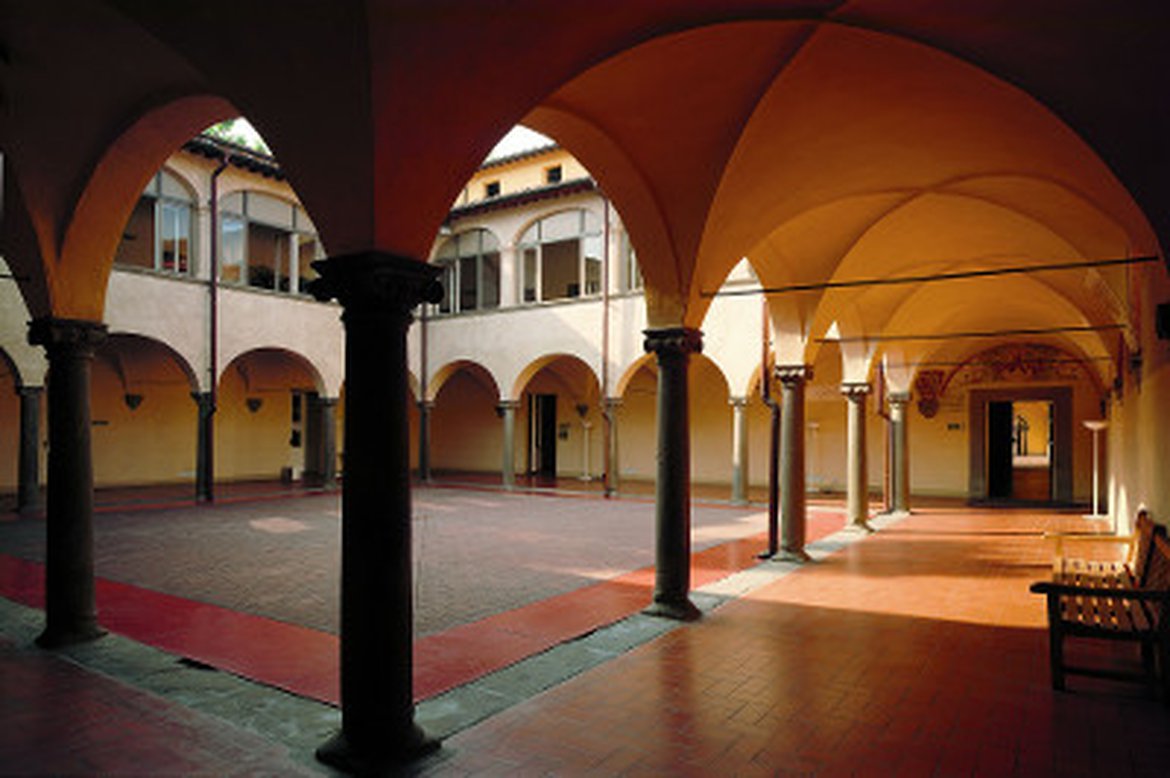4th HBP Student Conference - Hands-on Workshop Day
23 January 2020 | Pisa, Italy
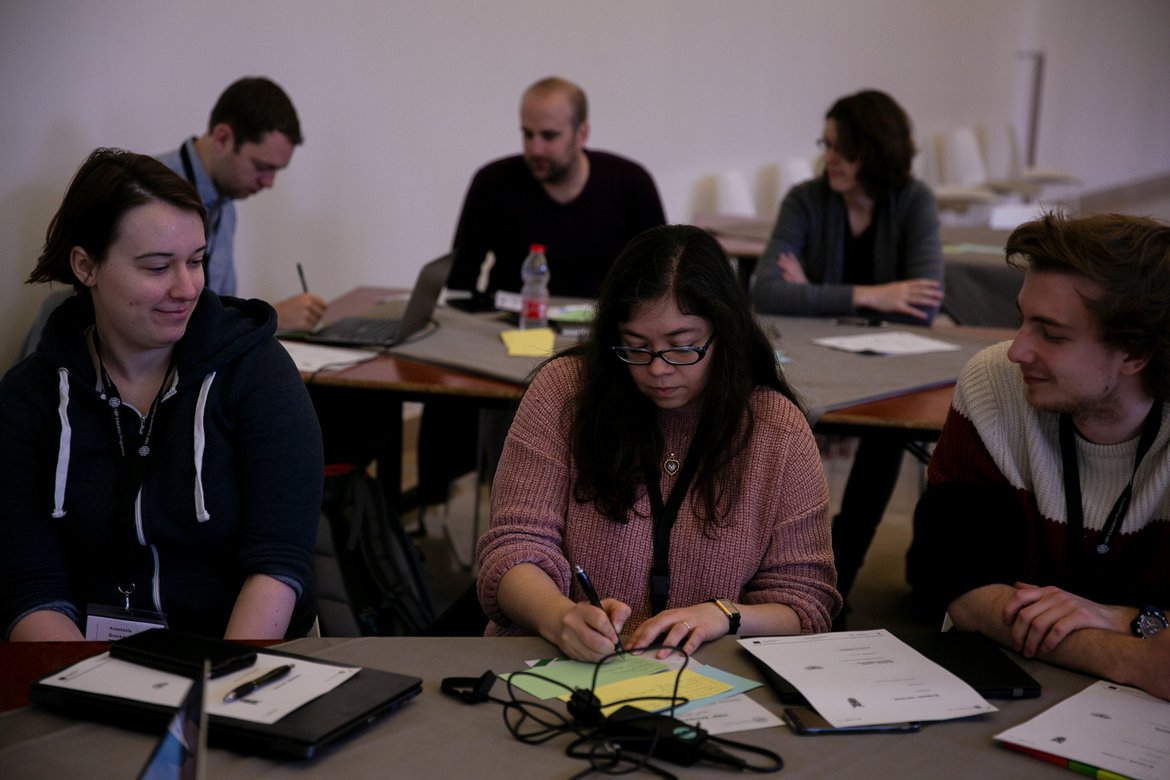
Registration for the 4th HBP Student Conference is mandatory, the number of participants is limited.
Registration deadline: 8 January 2020
Online registration is closed. On-site registration is possible.
Registration fees in EUR
| Online registration until 8 January 2020 | On-site registration | |
| Students * | 100.- | 150.- |
| Regular participants | 150.- | 200.- |
| * A proof of your student status (student ID) will be required on site, otherwise a surcharge (regular participant fee) has to be paid. |
||
The registration fee includes admission to all scientific sessions, conference material and coffee breaks during the conference.
The fee does not include travel and accommodation.
Registration fee waivers are available for a limited number of participants who successfuly submit an abstract for presentation. Participants can apply for fee waivers prior to the abstract submission deadline by sending an email to the organisers.
Confirmation of registration
You will receive an automatically generated notification via email after the registration has been completed. After your payment has been received, you will get a final confirmation.
After 8 January 2020, pre-registration will be closed, but you can also register on site at the venue.
Cancellations and refunds
Notice of cancellation has to be sent via email to the HBP Education Programme Office. The policy for refunding registration fees is as follows:
Written cancellation received:
before 30 September 2019: 80% refund
before 8 January 2020: 50% refund
from 8 January 2020: no refund.
No refunds will be granted for unattended events or early termination of attendance, in case of cancellation of speakers, lack of space in the conference room, or any other incidents during the conference that are beyond the control of the conference organisers.
Letter of invitation
Individuals requiring an official letter of invitation from the conference organisers can request one by contacting the 4th HBP Student Conference organisers at education@humanbrainproject.eu. To receive a letter of invitation, delegates must register for the conference first and submit any necessary data, as stated in the online form. The letter of invitation does not financially obligate the conference organisers in any way. All expenses incurred in relation to the conference, the registration, and the attendance are the sole responsibility of the delegate.
Modification of the programme
The conference organisers reserve the right to modify the programme. No refunds can be granted in case of cancellation of speakers, lack of space in the conference room, or any other incidents during the conference that are beyond the control of the conference organisers.
Cancellation of the conference
In the event that the conference cannot be held or is postponed due to events beyond the control of the conference organisers (force majeure) or due to events that are not attributable to wrongful intent or gross negligence of the conference organisers, the conference organisers cannot be held liable by delegates for any damages, costs, or losses incurred, such as transportation costs, accommodation costs, costs for additional orders, financial losses, etc.
PROGRAMME COMMITTEE
Chairs:
Sandra Diaz | Forschungszentrum Jülich
Gabriel Urbain | Ghent University
Committee:
Carmen Alina Lupascu | Italian National Research Council
Luca Peres | University of Manchester
Marta Turégano | Universidad Politécnica de Madrid
Alexander van Meegen | Forschungszentrum Jülich
Alper Yegenoglu | Forschungszentrum Jülich
Tutorials
The Human Brain Project has developed a new research infrastructure, EBRAINS, providing tools and services to the neuroscientific community. Researchers and students can share experimental and computational data, and the data is integrated to common 3D brain reference atlases to increase the comparability across modalities and scales. The EBRAINS data sharing service provides the necessary stewardship for sharing and integrating research data. By using organized and standardized metadata, we make the data easy to Find, Access, Interpret and Reuse in accordance with the FAIR principles (Wilkinson et al., Scientific Data 3:160018, 2016). Additionally, we use the anatomical location information available to map data to 3D brain reference atlases to achieve integration of neuroscience data regardless of their modality.
In this workshop, we will present and demonstrate our workflows and curation services tailored for sharing heterogeneous neuroscience data through discussions and hands-on activities, and describe the steps from data generation to EBRAINS data publication. Participants will learn about data and metadata management and how to register neuroscience data to 3D brain reference atlases. We will also give an overview of tools and workflows available for integrating and analysing neuroscience data. For those interested we also offer individual guidance on how to best and most efficiently share own data on EBRAINS.
 Ingrid Reiten is Msc in neuroscience and a researcher at the University of Oslo. With a background in biology, didactics and various modalities within neuroscience, she has developed an eagerness to couple these experiences to work towards a more collaborative research field with unified and more accessible research data. She does this in her current position as data curator in the Neuroinformatics platform of the Human Brain Project, collaborating across labs and research cultures to establish workflows for integration and sharing of heterogeneous neuroscience data.
Ingrid Reiten is Msc in neuroscience and a researcher at the University of Oslo. With a background in biology, didactics and various modalities within neuroscience, she has developed an eagerness to couple these experiences to work towards a more collaborative research field with unified and more accessible research data. She does this in her current position as data curator in the Neuroinformatics platform of the Human Brain Project, collaborating across labs and research cultures to establish workflows for integration and sharing of heterogeneous neuroscience data.
 Ulrike Schlegel is Msc in Molecular Biology with specialisation in neuroscience and physiology, and currently works as a researcher at the University of Oslo. As part of the Human Brain Projects data curation team, she is working towards a more collaborative and transparent neuroscientific research culture. Her interdisciplinary background in Chemistry, Life Sciences and Molecular Biology gives her the suitable toolkit to understand the needs of researchers in natural sciences.
Ulrike Schlegel is Msc in Molecular Biology with specialisation in neuroscience and physiology, and currently works as a researcher at the University of Oslo. As part of the Human Brain Projects data curation team, she is working towards a more collaborative and transparent neuroscientific research culture. Her interdisciplinary background in Chemistry, Life Sciences and Molecular Biology gives her the suitable toolkit to understand the needs of researchers in natural sciences.
The Neurorobotic Platform (NRP) is a tool developed in HBP SP10 to connect brains to robots in simulation. You can set-up experiments by declaring a robot, its actuators, sensors and environment and connect them to a brain simulation implemented in PyNN. Whatever your field, if you want to discuss ideas of an interdisciplinary experiment that can be rapidly prototyped and answer scientific questions that cannot be implemented in vivo, this subject is made for you.
 Gabriel Urbain (MSc 2015) was born in Mons, Belgium, in 1990. After a short stay at the MIT Space System Labs, he graduated in 2015 with a Master in Electrical Engineering at the University of Mons (UMons), Belgium and a Master in Aerospace Engineering at Supaero, Toulouse, France. He is currently pursuing at PhD at the IDLab, Ghent University (UGent) -- imec, Belgium, and he is involved in the Neurorobotics branch of HBP. His current research includes locomotion on compliant robots, machine learning and morphological computation. In 2018, he was invited for three months at the Dynamic Legged System Lab from the Italian Institute of Technology (IIT).
Gabriel Urbain (MSc 2015) was born in Mons, Belgium, in 1990. After a short stay at the MIT Space System Labs, he graduated in 2015 with a Master in Electrical Engineering at the University of Mons (UMons), Belgium and a Master in Aerospace Engineering at Supaero, Toulouse, France. He is currently pursuing at PhD at the IDLab, Ghent University (UGent) -- imec, Belgium, and he is involved in the Neurorobotics branch of HBP. His current research includes locomotion on compliant robots, machine learning and morphological computation. In 2018, he was invited for three months at the Dynamic Legged System Lab from the Italian Institute of Technology (IIT).
 Stefano Nardo is a software developer in The Biorobotics Institute of Scuola Superiore Sant'Anna. He received a Master's Degree in Computer Science at the University of Pisa in 2019 with a thesis on recurrent neural networks for sequence modeling.
Stefano Nardo is a software developer in The Biorobotics Institute of Scuola Superiore Sant'Anna. He received a Master's Degree in Computer Science at the University of Pisa in 2019 with a thesis on recurrent neural networks for sequence modeling.
With FENIX five European supercomputing centres, namely BSC (Spain), CEA (France), CINECA (Italy), CSCS (Switzerland) and JSC (Germany), have aligned their services to deliver as set of services requirements based primarily on neuroscience use-cases. The High Performance Analytics and Computing Platform develops and provides supercomputing, storage, visualization and simulation technology that can run on supercomputers and this FENIX infrastructure. Requesting FENIX resources is done with small proposal, which is internally reviewed. Student researchers are especially invited to apply for resources.
The first part of the session gives an introduction to the available resources and its basic usage in an hands-on session. In the second part the procedure for applying for these resources is explained. During the hands-on session students who want to applying for resources will be supported by experts from two HPC centers.
Experts: Wouter Klijn, Sandra Diaz, Alex Upton
Wouter Klijn completed an MSc in Artificial Intelligence from the University of Groningen, with a thesis on cortical micro-columns. He currently is a software architect in the Simlab Neuroscience part of the Jülich Supercomputer Centre, Forschungzentrum Jülich, with a focus on in AI, real-time big data streaming systems and complex HPC processing pipelines. He is responsible for science and use case management in the HBP, and ICEI/FENIX. He is also creating the science and software infrastructure architecture for the HBP.
This workshop will describe how to access the SpiNNaker platform, via both Jupyter Notebooks and the HBP Collaboratory. It will then discuss how to write spiking neural networks using the PyNN language to be executed on SpiNNaker, and introduce the integration with the HBP Neurorobotics environment. Participants will be given access to the Jupyter Notebook system from which they will be able to follow some lab examples, and then go on to create their own networks running on the platform, as well as create co-simulations with the robotics environment.
Structure:
1. How to access SpiNNaker using Jupyter and the HBP Collaboratory
2. How to use the NRP through the SpiNNaker Jupyter Service
3. Running PyNN Simulations on SpiNNaker
4. Run lab examples and write your own networks
 Andrew Rowley is a Senior Research Software Engineer working at the University of Manchester in the UK, where he has been part of the SpiNNaker software development team since 2014, taking the role early in the Ramp-Up Phase of the Human Brain Project. Andrew graduated from St. Andrews University with a BSc in Computer Science and Physics and a PhD in Computer Science studying Artificial Intelligence. He then joined the University of Manchester as a Software Engineer in 2009, before working as a Senior Software Engineer at the National Centre for Text Mining also in the University. His work is in leading the SpiNNaker software team in the development of all parts of the software, including the low-level light-weight “operating system”, the SpiNNaker C code that compiles into instruction code that runs on the machine, the Python and Java code that translates user scripts into executable networks, and the software that allows users to access the machine remotely. He also likes to help researchers execute their neural network simulations on SpiNNaker, and has been involved in various tasks to this end, including the first verified execution of a cortical microcircuit on a neuromorphic platform.
Andrew Rowley is a Senior Research Software Engineer working at the University of Manchester in the UK, where he has been part of the SpiNNaker software development team since 2014, taking the role early in the Ramp-Up Phase of the Human Brain Project. Andrew graduated from St. Andrews University with a BSc in Computer Science and Physics and a PhD in Computer Science studying Artificial Intelligence. He then joined the University of Manchester as a Software Engineer in 2009, before working as a Senior Software Engineer at the National Centre for Text Mining also in the University. His work is in leading the SpiNNaker software team in the development of all parts of the software, including the low-level light-weight “operating system”, the SpiNNaker C code that compiles into instruction code that runs on the machine, the Python and Java code that translates user scripts into executable networks, and the software that allows users to access the machine remotely. He also likes to help researchers execute their neural network simulations on SpiNNaker, and has been involved in various tasks to this end, including the first verified execution of a cortical microcircuit on a neuromorphic platform.
Simulating a spiking network containing 1.000.000 neurons sounds like a daunting task? With the right high-performance computing hardware and the appropriate software, the NEST simulator, it is a piece of cake. Interested in a hands-on? Even if you just want to know how to use a high-performance computing system or how to quickly run a network simulation on your laptop, this will be useful for you. Now the interesting question: What would you do with both the computing power and the ability to simulate large-scale networks at hand?
Experts: Sandra Diaz Pier, Alper Yegenoglu, Alexander van Meegen
 Sandra Diaz Pier was born in Mexico where she studied Electronic Systems Engineering and did a masters in Computer Sciences. Afterwards she moved to Canada where she obtained a second masters in Electrical Engineering. Today she works and is a PhD student at the Simulation Lab Neuroscience in the Jülich Research Centre in Germany. She is passionate about research in the fields of neuroscience and computation. Currently her research work involves efficient simulation of neural networks at different scales, structural plasticity, parameter space exploration techniques and analysis of the relationships between connectivity and function of the brain. Her work also involves helping neuroscientists port their applications and make efficient usage of the super computing infrastructure in Jülich.
Sandra Diaz Pier was born in Mexico where she studied Electronic Systems Engineering and did a masters in Computer Sciences. Afterwards she moved to Canada where she obtained a second masters in Electrical Engineering. Today she works and is a PhD student at the Simulation Lab Neuroscience in the Jülich Research Centre in Germany. She is passionate about research in the fields of neuroscience and computation. Currently her research work involves efficient simulation of neural networks at different scales, structural plasticity, parameter space exploration techniques and analysis of the relationships between connectivity and function of the brain. Her work also involves helping neuroscientists port their applications and make efficient usage of the super computing infrastructure in Jülich.
 Alper Yegenoglu received his Diploma (=M.Sc.) in 2013 in Computer Science at the Technical University of Dortmund where he worte his thesis on the extraktion and classification of salient regions in radiological data.
Alper Yegenoglu received his Diploma (=M.Sc.) in 2013 in Computer Science at the Technical University of Dortmund where he worte his thesis on the extraktion and classification of salient regions in radiological data.
From 2013 to 2018 he worked as a software coordinator in the Institute of Neuroscience and Medicine (INM-6), Forschungszentrum Juelich, developing and cooridnating the Electrophysiology Analysis Toolkit (Elephant). In 2018 he started his PhD at the Simlab Neuroscience, Juelich Super Computing Center, Forschungszentrum Juelich. Currently he is working on machine learning techniques to understand how artificial algorithms can learn and how this differs from biological learning and how to bring those similar but different learning capabilities a little bit closer.
What can be done to prevent the misuse of neuroscience research? Should researchers and engineers worry about how the results of their work are used? How do we make sure that research findings and new technologies are used in responsible, ethical and socially beneficial ways? In this interactive workshop, we will address these questions (and many more!) with the aim of raising awareness of dual use and misuse issues among neuroscientists and engineers. The workshop will offer an overview of the fields of Dual Use, Misuse, and Responsible Research and Innovation, and will provide an opportunity to reflect on relevant developments in neuroscience and brain-related computer technologies. The workshop builds on the work of the HBP Dual Use working group.
 Tara Mahfoud is a Research Associate in the Department of Global Health and Social Medicine at King’s College London (KCL), and a Visiting Research Fellow in the Science, Technology and Society programme at the Harvard Kennedy School of Government. Tara is an anthropologist of science, technology and medicine interested in the cultural, social, political and clinical contexts and implications of developments in the neurosciences in Europe. Tara joined the HBP Ethics and Society sub-project in 2017 where she explores the potential future impacts of new knowledge and technologies, such as big data and machine learning, for neurology and psychiatry. At KCL, Tara also co-leads the Neuroscience and Society Network, an interdisciplinary forum for engagements across the social sciences, humanities and neurosciences.
Tara Mahfoud is a Research Associate in the Department of Global Health and Social Medicine at King’s College London (KCL), and a Visiting Research Fellow in the Science, Technology and Society programme at the Harvard Kennedy School of Government. Tara is an anthropologist of science, technology and medicine interested in the cultural, social, political and clinical contexts and implications of developments in the neurosciences in Europe. Tara joined the HBP Ethics and Society sub-project in 2017 where she explores the potential future impacts of new knowledge and technologies, such as big data and machine learning, for neurology and psychiatry. At KCL, Tara also co-leads the Neuroscience and Society Network, an interdisciplinary forum for engagements across the social sciences, humanities and neurosciences.
 Inga Ulnicane has more than ten years of international and interdisciplinary research, teaching and engagement experience in the field of science, technology and innovation policy and governance. She has published on topics such as international research collaboration, European integration in science and technology and the Grand societal challenges concept as well as undertaken commissioned studies for European Parliament and European Commission. Currently she is a Research Fellow at De Montfort University (Leicester, UK). She is part of the HBP Ethics Support work package of the Ethics and Society subproject. She is Co-Chair of the Human Brain Project’s Dual Use working group and a task leader for Ethics Support Outreach and Dissemination. Her current research topics include governance of Artificial Intelligence and dual use.
Inga Ulnicane has more than ten years of international and interdisciplinary research, teaching and engagement experience in the field of science, technology and innovation policy and governance. She has published on topics such as international research collaboration, European integration in science and technology and the Grand societal challenges concept as well as undertaken commissioned studies for European Parliament and European Commission. Currently she is a Research Fellow at De Montfort University (Leicester, UK). She is part of the HBP Ethics Support work package of the Ethics and Society subproject. She is Co-Chair of the Human Brain Project’s Dual Use working group and a task leader for Ethics Support Outreach and Dissemination. Her current research topics include governance of Artificial Intelligence and dual use.
Get back to the programme overview
ABOUT THE VENUE
SANT’ANNA MAIN CAMPUS
CONVENT AND CLOISTER OF ST. GEROLAMO
Piazza martiri della libertà, 33
56127 Pisa PI
Italy
FAQs & ALL YOU NEED TO KNOW
- Admission to all scientific sessions
- Conference material
- Coffee breaks during the conference
The fee does not include travel and accommodation.
Registration fee waivers are available for a limited number of participants who successfuly submit an abstract for presentation. Participants can apply for fee waivers prior to the abstract submission deadline by sending an email to the organisers.
Pisa is easily accessible by air, train, bus or car. Detailed information can be found on the “Visit Pisa” website.
- Pisa by plane
Pisa has an airport: Aeroporto Internazionale Galileo Galilei Pisa or you can also fly to Florence: Aeroporto Amerigo Vespucci. For further information, have a look at the Pisa Airport or Florence Airport website.
2. Pisa by car
If you decide to come by car, you will find Pisa at the crossroads of two large motorways:
A12/E80 connecting Nice, Geneve, Bern, Barcelona
A11/E76 connecting Florence, Ljubljana, Vienna, Zagreb, Munich, Bratislava, Budapest
3. Pisa by train
The main railway station in Pisa is:
- Stazione Ferroviaria Pisa Centrale.
There is also a connection between Pisa airport and Pisa main railway station, the Pisa Mover.
If you are planning to travel by train frequently, the following tickets provide for a cheaper journey:
More information on train tickets can be found on the website of the Trenitalia or Italiarail.
For international connections by bus, train or air visit Omio.
Further information about traveling to Pisa and other useful information can be found on the “Visit Pisa” website.
In order to get to the venue you can take the bus No. 2 or 4 from the main station and get off at the station S.Lorenzo. From there it only takes you 2 minutes to the venue.
Ho(s)tels or Youth hostel:
– You can visit the website of the City of Pisa to find a hotel: Visit Pisa
– Affordable lodging: www.hostelpisa.it or www.german.hostelworld.com/Jugendherbergen/Pisa/Italien
Bed & Breakfast:
– Visit the website of Bed & Breakfast possibilities: www.bed-and-breakfast.it/mobile/de/pisa or www.booking.com
In Italy there are a lot of Bed & Breakfast possibilities also with a very high and exclusive standard!
Hotels: (prices for single rooms)
Category 2* Hotel Moderno from € 33
Hotel Milano from € 45
Category 3* Hotel Minerva from € 60
Royal Victoria Hotel from € 56
Category 4* NH Pisa from € 67
Grand Hotel Duomo from € 61
- Language
The official language spoken in Italy is Italian. Pisa is located in the province of Tuscany. The most common foreign languages in Italy are German and English.
- Time zone
Pisa is located in the Central European Time Zone (CET = GMT+1).
- Currency, credit cards, banking
The official currency in Italy is the EURO (EUR, €). The most common international credit cards (such as Mastercard or Visa) as well as debit cards (Maestro) are generally accepted in Pisa. ATMs are available throughout the city.
Tipping is not common in Italy. Restaurant, taxi and hairdresser bills include the service charge. However, if you are very happy with the service you got, leaving a few Euros (or to round up your bill) as a tip is the way forward, but think of 10 % as the maximum to leave (i.e. when you receive exceptional service).
- Climate
In Italy the climate is mediterranean with its hot, dry summers and cool, wet winters. The average temperature in January in Pisa is between 2 and 11 °C (35 and 52 °F).
- Electric current
In Italy you find power plugs and sockets of type F and L. The standard voltage is 230 V and the standard frequency is 50 Hz.
- Tap water
Tap water should be safe to drink in Italy.
Please note that the information provided on this site has been obtained from several different sources and therefore the organisers cannot accept any responsibility for errors therein.
ORGANISERS
Egidio Falotico | Scuola Superiore Sant'Anna
Federica Radici | Scuola Superiore Sant'Anna
Theresa Rass | Medical University Innsbruck
Laura Saxer | Medical University Innsbruck


